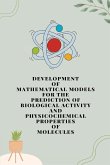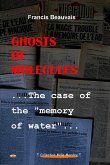Stimuli-Responsive Molecules Photophysical Investigation by U. Sathiskumar is a comprehensive book that explores the exciting field of stimuli-responsive molecules and their photophysical properties. The book presents an in-depth investigation into the fascinating world of fluorescence and its associated phenomena, such as quenching, photoinduced electron transfer, and conformational changes. The book discusses the concept of molecular switches and how these are used to control the properties of the molecule in response to specific stimuli, such as protonation, solvation, pH, temperature, pressure, or light. The discussion includes examples of stimuli-responsive molecules that exhibit thermochromic, electrochromic, and mechanochromic properties. The book covers the topic of aggregation-induced emission and excited-state intramolecular proton transfer, which are important in the design of molecules for optoelectronics, biosensors, and bioimaging applications. The book also delves into Förster resonance energy transfer and time-resolved spectroscopy, which are critical techniques for understanding the photophysical properties of stimuli-responsive molecules, including femtosecond dynamics and ultrafast relaxation. The book covers several emerging applications of stimuli-responsive molecules, including photodynamic therapy, photoswitchable ligands, molecular photoswitches, surface-enhanced Raman spectroscopy, plasmonics, metal-organic frameworks, and supramolecular chemistry. The discussion also includes the application of stimuli-responsive molecules to biomolecules such as peptides, proteins, nucleic acids, DNA, RNA, and aptamers. The book explores the use of nanoparticles, quantum dots, fluorescent proteins, and FRET sensors for bioimaging and biosensing applications, as well as the rapidly evolving field of optogenetics. The book concludes by discussing the use of stimuli-responsive molecules in the design of smart materials, responsive polymers, and self-assembly systems. Overall, this book provides an excellent resource for researchers and students interested in the design and application of stimuli-responsive molecules.







